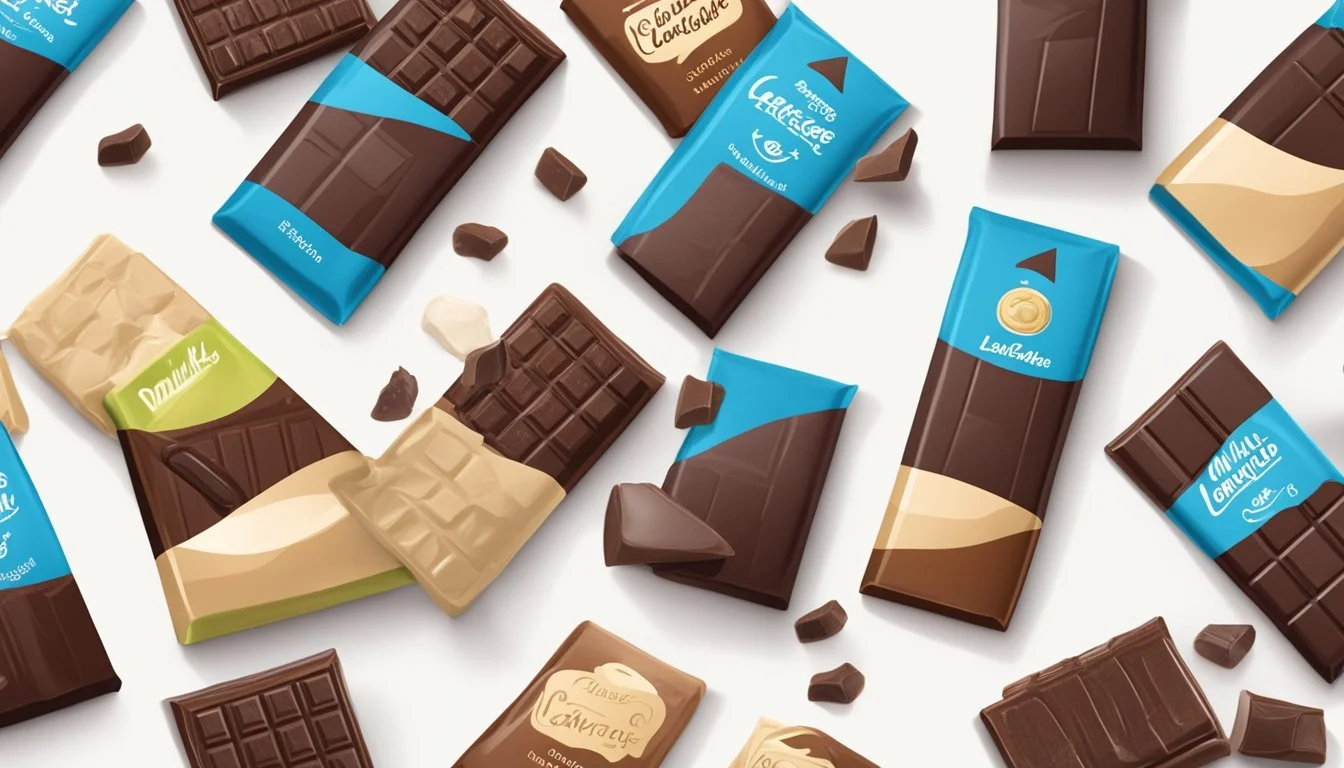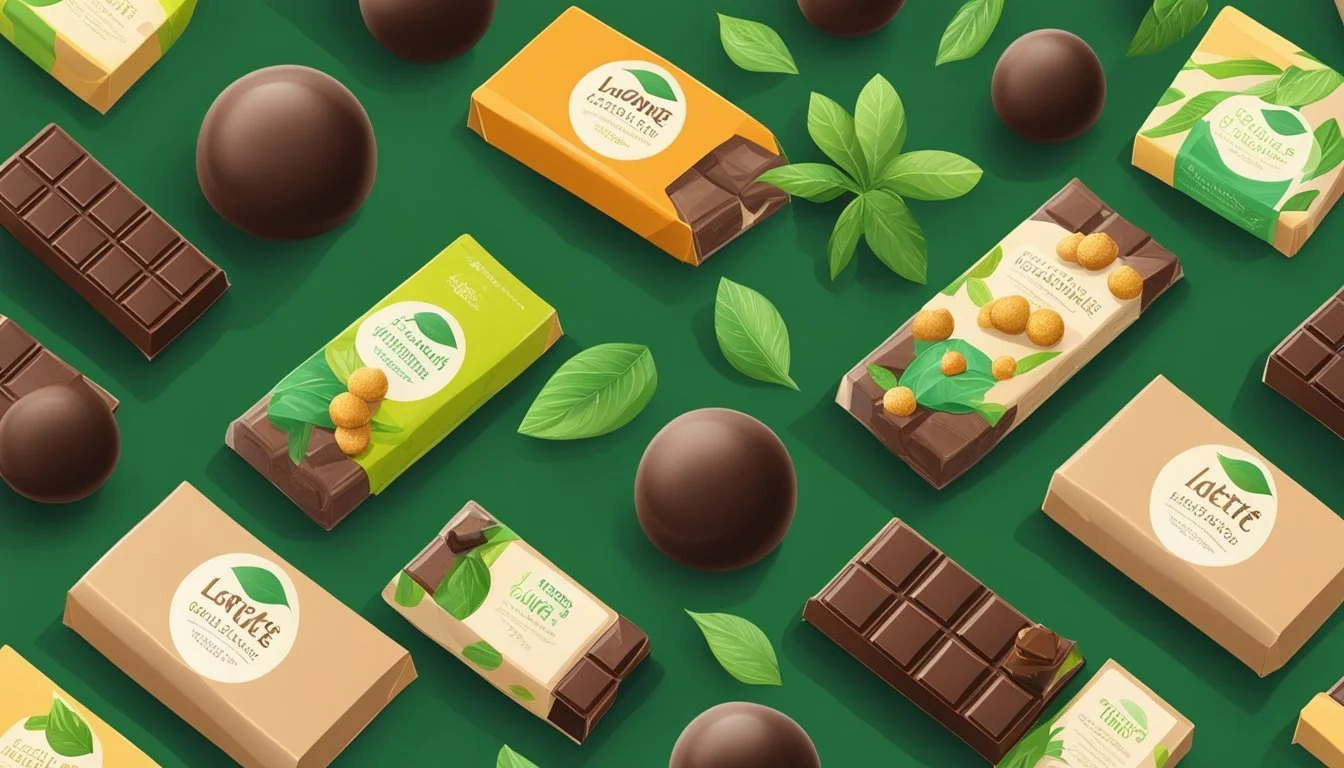What Are Some Lactose-Free Chocolate Options?
Exploring Dairy-Free Indulgences
Lactose intolerance can create barriers for those who enjoy the rich taste of chocolate, but the rise of lactose-free options has opened the door to indulgence without discomfort. Lactose-free chocolate caters to the dietary requirements of individuals who wish to avoid the milk sugars that can cause digestive issues. These chocolates are not just a niche market but have become mainstream, available in various forms such as dark, oat milk, and specialty bars.
Manufacturers are increasingly producing chocolate that maintains the creaminess and flavor profiles traditionally found in milk chocolate, without the use of lactose. This is achieved through the use of alternative milk sources like oat milk, which provides a similar texture and sweetness. Some brands specifically formulate their chocolate to be gluten-free, nut-free, and soy-free in addition to being lactose-free, making it suitable for a wide array of dietary restrictions.
The availability of lactose-free chocolate has expanded beyond health food stores to major retailers and online platforms, offering convenience and a range of options. Consumers can find everything from luxurious truffles and gourmet bars to holiday gift assortments that ensure no one misses out on the joy of chocolate, regardless of lactose intolerance.
Understanding Lactose-Free Chocolate
When exploring the world of chocolate, it is important to differentiate between lactose-free and dairy-free options and understand the benefits lactose-free chocolate offers to consumers with dietary restrictions or lactose intolerance.
Differences Between Dairy-Free and Lactose-Free
Lactose-Free: Lactose-free chocolate is made by removing lactose from dairy ingredients or substituting dairy milk with lactose-free milk.
Dairy-Free: Dairy-free chocolate goes a step further; it contains no dairy products at all, instead using alternatives like rice milk, almond milk, or oat milk.
It is crucial to recognize that all dairy-free chocolates are inherently lactose-free, but not all lactose-free chocolates are dairy-free. For individuals allergic to dairy proteins or following a vegan diet, only dairy-free chocolate is suitable.
Benefits of Lactose-Free Chocolate
Lactose-free chocolate provides several advantages:
Digestibility: It is easier to digest for those with lactose intolerance, preventing discomfort and digestive issues.
Flavor Variety: Lactose-free chocolates often match the creamy taste and texture of traditional chocolates, offering a wide range of flavors without the lactose.
Inclusive Eating: Lactose-free options make it possible for more people to enjoy chocolate without dietary or health constraints.
Adopting lactose-free and dairy-free practices can also lead producers to consider organic chocolate-making, resulting in products with fewer pesticides and chemicals. This can be seen as both an environmental and health-conscious choice.
In sum, lactose-free chocolate serves as an inclusive alternative to traditional chocolate, maintaining flavor diversity while offering digestibility and meeting dietary needs.
Popular Types of Lactose-Free Chocolate
Lactose-free chocolate caters to those desiring the richness of cocoa without dairy products. This section explores types of lactose-free chocolates that maintain the delight of traditional chocolate while offering alternatives to lactose.
Dark Chocolate
Dark chocolate is a robust option for lactose-intolerant individuals, often made without any dairy components. It relies on a higher percentage of cocoa solids and may include cocoa butter and sugar to enhance its flavor. ChocZero is one brand that offers sugar-free dark chocolate, sweetened with monk fruit extract, and free from dairy, soy, and sugar alcohols.
Oat Milk Chocolate
Oat milk chocolate is a creamy alternative that uses oat milk instead of dairy. Two noteworthy brands are Raaka, with their 58% Oat Milk Chocolate that includes coconut, and Potomac’s Oat Milk Chocolate, presenting unique flavors and smooth textures suitable for those preferring a milder taste than dark chocolate.
Almond Milk Chocolate
Similarly, almond milk chocolate substitutes cow's milk with almond milk, yielding a nutty undertone and velvety consistency. These chocolate bars provide an indulgent experience without lactose, and some brands ensure their products are gluten-free and dairy-free, though one should always review ingredient lists.
Coconut Milk Chocolate
Coconut milk chocolate provides a hint of tropical flavor due to the use of coconut milk. This dairy-free alternative adds a slight sweetness and a distinct coconut fragrance to the chocolate, making it a favorite for those who enjoy the fusion of traditional chocolate flavors with a coconut twist.
Rice Milk Chocolate
Lastly, rice milk chocolate stands as a sweet, dairy-free option that utilizes rice milk to achieve a smooth and creamy texture. These chocolates attend to the dairy avoidance need while also catering to consumers looking for a milder chocolate taste, comparable to that of milk chocolate but without lactose.
Key Ingredients in Lactose-Free Chocolates
Lactose-free chocolates substitute the dairy-based ingredients found in traditional chocolates with various plant-based and non-dairy alternatives, maintaining the rich flavor and texture that chocolate lovers seek.
Cacao Content and Cocoa Butter
Cacao Content: The main ingredient in all chocolate, including lactose-free options, is cacao. The percentage of cacao in chocolate can range widely, from 55% to over 70%, affecting the richness and taste.
Cocoa Butter: A crucial component, cocoa butter, provides a creamy texture without the need for milk. It is naturally dairy-free and gives the chocolate its melt-in-your-mouth quality.
Alternative Sweeteners
Lactose-free chocolates often incorporate alternative sweeteners to avoid lactose:
Sugar: Some brands utilize traditional sugar, ensuring it hasn't been processed with bone char to maintain a vegan product status.
Monk Fruit Extract: For those seeking sugar-free options, sweeteners like monk fruit extract provide sweetness without dairy or sugar alcohols.
Tapioca Syrup: A less common, but still used sweetener is tapioca syrup, serving as a plant-based and gluten-free sugar substitute.
Emulsifiers and Flavorings
Soy Lecithin: An emulsifier such as soy lecithin ensures that the chocolate mixture remains homogeneous. However, some brands opt for soy-free alternatives to cater to people with soy allergies.
Vanilla: Flavorings like vanilla are common in lactose-free chocolates, enhancing the overall flavor profile without adding lactose.
Other Emulsifiers: Various non-soy-derived emulsifiers can be used to replace lecithin, like those derived from sunflower oil.
Brands Offering Lactose-Free Chocolate Options
Consumers seeking lactose-free chocolate have a variety of brands to choose from. These range from luxury and artisanal options to more mainstream brands that are widely available, as well as small-batch producers that cater to a niche market.
Luxury and Artisanal Brands
Hu Kitchen and Raaka are prominent in the luxury lactose-free chocolate niche. Hu Kitchen presents a selection of high-quality chocolate that is not only lactose-free but also free of refined sugars, catering to a health-conscious audience. Raaka prides itself on its unroasted chocolate, offering unique flavor profiles while maintaining a commitment to lactose-free products.
Goodio and Cocoa Parlor also situate themselves in the area of luxury chocolates, providing lactose-free options that focus on sustainability and organic ingredients, alongside a premium chocolate experience.
Mainstream and Accessible Brands
For those looking for more widely available options, brands like Lindt and Endangered Species offer lactose-free varieties. Lindt's higher cocoa content dark chocolate bars are naturally lactose-free, allowing for broad accessibility. Endangered Species, on the other hand, specializes in environmentally conscious chocolate and offers oat milk-based options that are lactose-free.
Alter Eco is another mainstream brand providing organic chocolate bars with environmentally friendly packaging. They ensure a wide appeal by offering rich flavors without lactose.
Small-Batch and Niche Producers
Charm School Chocolate and Rose City are examples of smaller, niche producers that create handcrafted lactose-free chocolate. Charm School Chocolate is known for its vegan chocolate varieties offering a rich and creamy tasting experience without lactose. Rose City provides artisanal, lactose-free chocolates that cater to those who appreciate a more bespoke approach.
Pascha Organics specializes in organic, allergy-friendly chocolates that are free from lactose and other common allergens. They emphasize a pure, unadulterated chocolate experience with a range of cocoa percentages.
By knowing which brands to look for, consumers can enjoy a diverse array of lactose-free chocolates that cater to both their dietary needs and their taste preferences.
Health and Dietary Considerations
When selecting lactose-free chocolate options, individuals must consider potential allergens, nutritional benefits, and suitability for special diets to make informed decisions that align with their health and dietary requirements.
Allergens and Sensitivities
Consumers seeking lactose-free chocolate should be aware of other common allergens such as soy, nuts, and gluten. Brands like ChocZero offer the promise of soy-free and sugar alcohol-free choices, often sweetened with monk fruit extract. It is essential for those with allergies or sensitivities to meticulously check labels to ensure the absence of these ingredients.
Nutritional Benefits
Lactose-free chocolate, especially dark chocolate, retains antioxidants believed to support heart health. Products like Endangered Species Dark Chocolate Bar offer a high nutritional value. However, one should note that not all dark chocolates are created equal; some might still contain dairy or other additives so choosing pure, dairy-free chocolate with a higher cocoa content is advisable for maximum health benefits.
Choosing Chocolate for Special Diets
For those adhering to vegan, paleo, or other specific dietary lifestyles, finding suitable chocolate options is crucial. Vegan chocolate bars omit all animal products, while paleo-friendly choices avoid grains, legumes, and refined sugar, often utilizing plant-based milks instead of dairy. It is important to select chocolates that cater to these dietary restrictions, ensuring products are certified vegan or gluten-free if applicable.
Ethical and Environmental Aspects
When considering lactose-free chocolate options, one must take into account not only the dietary aspect but also the impact on the environment and the workers involved in the chocolate production process. This ethical and environmental scrutiny ensures that the final product aligns with the values of fair trade, environmentally-friendly production, and a reduced carbon footprint.
Fair Trade and Ethically Sourced Ingredients
Fair trade certification is key for ensuring that the cacao beans used in chocolate production are ethically sourced. It guarantees that farmers and workers involved receive fair compensation and work under decent conditions. Ethical chocolatiers prioritize the use of such ingredients, often paying above the market price to support community development and improve working conditions.
Examples of Ethical Brands:
Pacari: Notable for contributing to Ecuador's local economy.
Divine Chocolate: Chooses to support and empower cocoa farmers.
Sustainable Production Practices
Sustainable production practices are essential among ethical chocolate companies. They make concerted efforts to preserve biodiversity, especially in vulnerable areas like the Peruvian Amazon, where cacao production can have significant environmental impacts. These companies often engage in:
Direct partnerships with farmers.
Organic farming techniques to avoid harmful pesticides.
Zero deforestation policies.
Reducing Carbon Footprint
Dairy-free options inherently have a smaller carbon footprint than dairy-based chocolates due to the omission of animal products, which are resource-intensive to produce. Ethical and sustainable brands strive to reduce their carbon footprint further by implementing energy-efficient production methods, using recyclable packaging, and reducing transportation emissions.
Initiatives:
Use of renewable energy sources.
Locally-sourced ingredients to minimize transportation.
Cooking and Baking with Lactose-Free Chocolate
When it comes to cooking and baking, lactose-free chocolate offers a diverse palette for creating delicious desserts without the lactose content. This section explores recipes specifically designed for lactose-free chocolate and how to substitute it effectively in traditional recipes.
Recipes for Homemade Treats
Lactose-free chocolate can be the main ingredient in a variety of homemade treats. For those looking to craft their own confections, truffles can be made with lactose-free dark chocolate and substitutes like almond milk or soy milk. Starting with high-quality lactose-free chocolate ensures the end result is rich and satisfying. Additionally, bonbons and almond butter cups are simple to prepare, often requiring little more than melting chocolate and pouring it into molds with desired fillings. Dairy-free chocolate barks with nuts and dried fruits make for easy, guilt-free snacks that can be broken into pieces and enjoyed anytime.
Substituting Lactose-Free Chocolate in Traditional Recipes
Bakers can use lactose-free chocolate to create traditional desserts that normally contain lactose. For recipes involving chocolate mousse which necessitate a creamy texture, lactose-free heavy whipping creams or coconut creams are excellent alternatives. In recipes for fudge or desserts that require milk, lactose-free milk can be used in equal measure—though bakers should remember to adjust for potential differences in sweetness and browning. When using lactose-free milk, a brush of dairy-free spread or plant-based oil can help enhance browning in baked goods.
Here is a brief rundown of how to substitute ingredients:
Chocolate Chips: Swap out standard chocolate chips with lactose-free chocolate chips in any recipe.
Chocolate Ganache: Use lactose-free chocolate and non-dairy milks like soy milk to achieve a glossy ganache suitable for icing.
Chocolate Mousse: For creamy desserts such as mousse, utilize dairy-free whipped cream alternatives along with lactose-free chocolate.
Where to Buy Lactose-Free Chocolate
Lactose-free chocolate is increasingly available and can be found in various locations, catering to those with lactose intolerance as well as vegan preferences. Health food stores, such as Whole Foods, commonly carry a diverse selection of lactose-free options, including both dark chocolate bars and dairy-free milk chocolate.
Customers in Europe have access to a wide range of vegan chocolates at local health food shops and even larger supermarkets, as vegan-friendly ingredients become more mainstream. Online marketplaces like eBay provide a platform where specialty items can be purchased from different sellers, offering convenience and a broad selection. Essential Labs, for example, is known for its focus on natural and organic ingredients, and they list their lactose-free products online for sale.
In the U.S., particularly in Portland, one can find stores that specialize in handmade, lactose-free chocolates. These artisanal options often prioritize natural ingredients and sustainable sourcing. It's not unusual for these products to also be palatable to those following specific dietary lifestyles, such as keto, paleo, or plant-based diets.
For those seeking convenience, online stores frequently offer lactose-free chocolates. Brands like ChocZero and Endangered Species offer sugar-free and oat milk chocolate varieties, available for direct purchase or through online retailers.
Here's a quick guide to finding lactose-free chocolate:
Online Retailers:
eBay
Specialty online stores
Physical Stores:
Whole Foods and similar health food stores
Artisanal chocolate shops in regions such as Portland
Product Types:
Dark chocolate bars
Dairy-free milk chocolate
Vegan-friendly options
Reading Labels and Understanding Percentages
When selecting lactose-free chocolate, reading labels accurately is crucial. One should look for chocolates with a high percentage of cocoa content, as these are more likely to be dairy-free. A percentage indicating cocoa content involves two components: cocoa solids and cocoa butter. As the percentage increases, the presence of other additives like milk solids typically decreases.
One should be vigilant when inspecting the ingredients list. A product labeled as 70% cocoa or higher usually contains less likelihood of lactose, as the majority is made up of chocolate liquor and cocoa butter. Ingredients to be cautious about include milk fat, milk solids, and whey.
Here is what to look for on a chocolate label:
Ingredient Lactose-Free Indicator Chocolate Liquor Commonly lactose-free Cocoa Percentage Seek 70% or higher Milk, Cream, Whey Avoid these terms
Familiarity with terms like "chocolate liquor", which is pure cocoa mass in liquid form, and identifying the absence of any milk-derived ingredients ensures a confident choice of lactose-free chocolate. Remember that "lactose-free" is not equivalent to "dairy-free"; however, high cocoa content chocolates typically contain no milk additives, thus being suitable for a lactose-free diet. As there are no specific FDA regulations for lactose-free claims, vigilance in reading labels is key.
Finally, third-party certifications can be a helpful guide. Look for labels such as "Certified Vegan" or "Lactose-Free" certifications that can provide an additional layer of reassurance.
Lactose-Free Chocolate Brands to Avoid
When seeking lactose-free chocolate options, consumers should be aware of certain brands that may not cater to their dietary restrictions, despite offering a variety of chocolate products. Brands like Hershey's, Dove, and Ghirardelli are renowned for their conventional chocolate goods, but they have limited options for those avoiding lactose.
Hershey's does offer some dark chocolate varieties which tend to have less lactose than milk chocolate; however, cross-contamination is possible due to shared facilities. Hence, they might not be suitable for individuals with lactose intolerance or dairy allergies. Verification of the ingredients list is crucial before consumption.
Similarly, Dove chocolates are known for their silky texture and rich taste, largely derived from milk ingredients. Their dark chocolate selections could have traces of lactose, and given the prominence of milk in their recipes, lactose-free options are scarce.
Ghirardelli also primarily produces chocolates that contain lactose. Although their "Intense Dark" chocolate line may appear safer for those seeking lactose-free products, it is important to read the labels carefully, as there is still a risk of lactose content.
Consumers should seek chocolate brands that explicitly state their products are dairy-free or specifically cater to a lactose-free diet. It's always recommended to scrutinize ingredient lists and look for certifications indicating the absence of dairy to ensure a safe and enjoyable chocolate experience.









